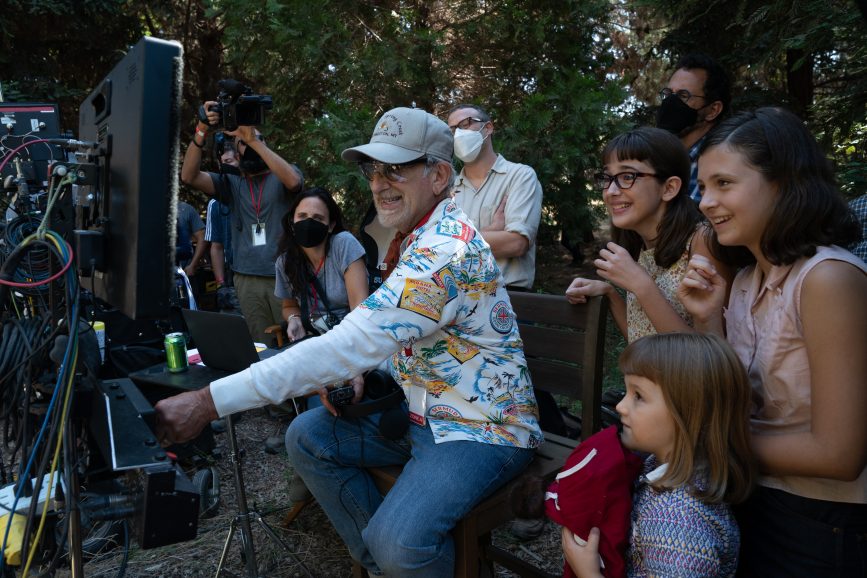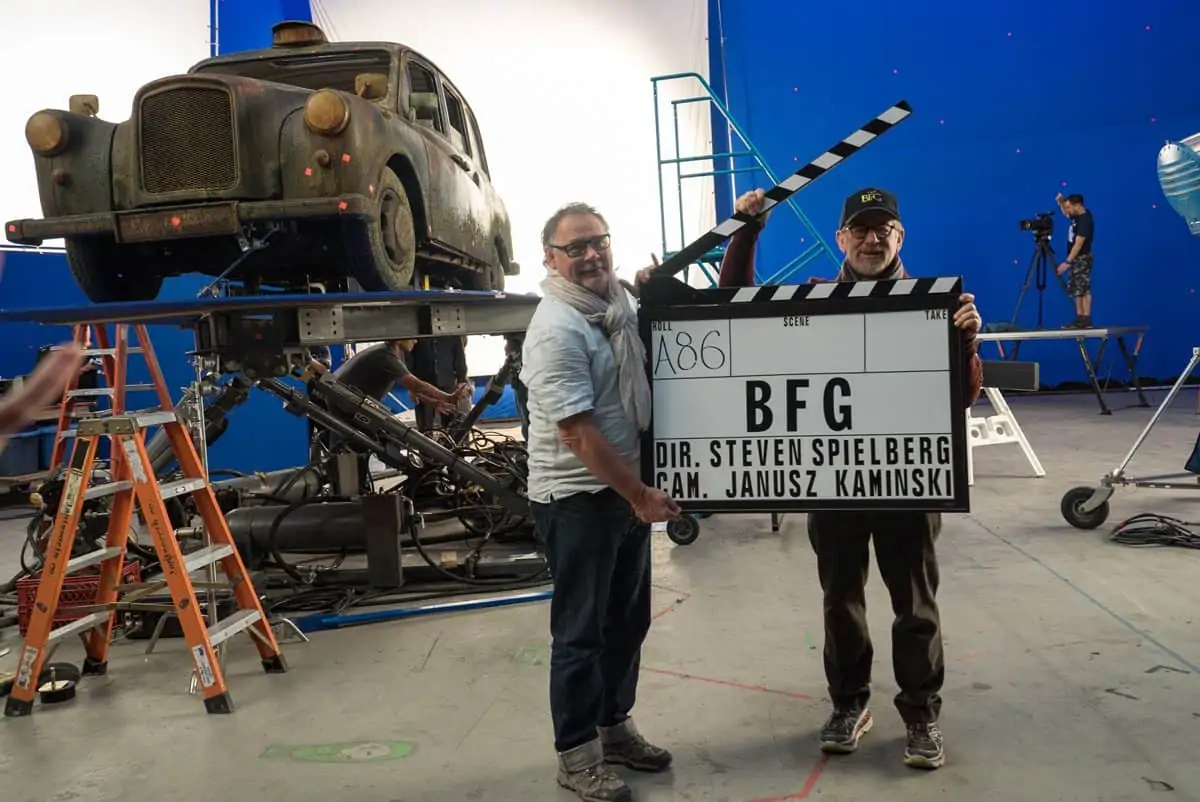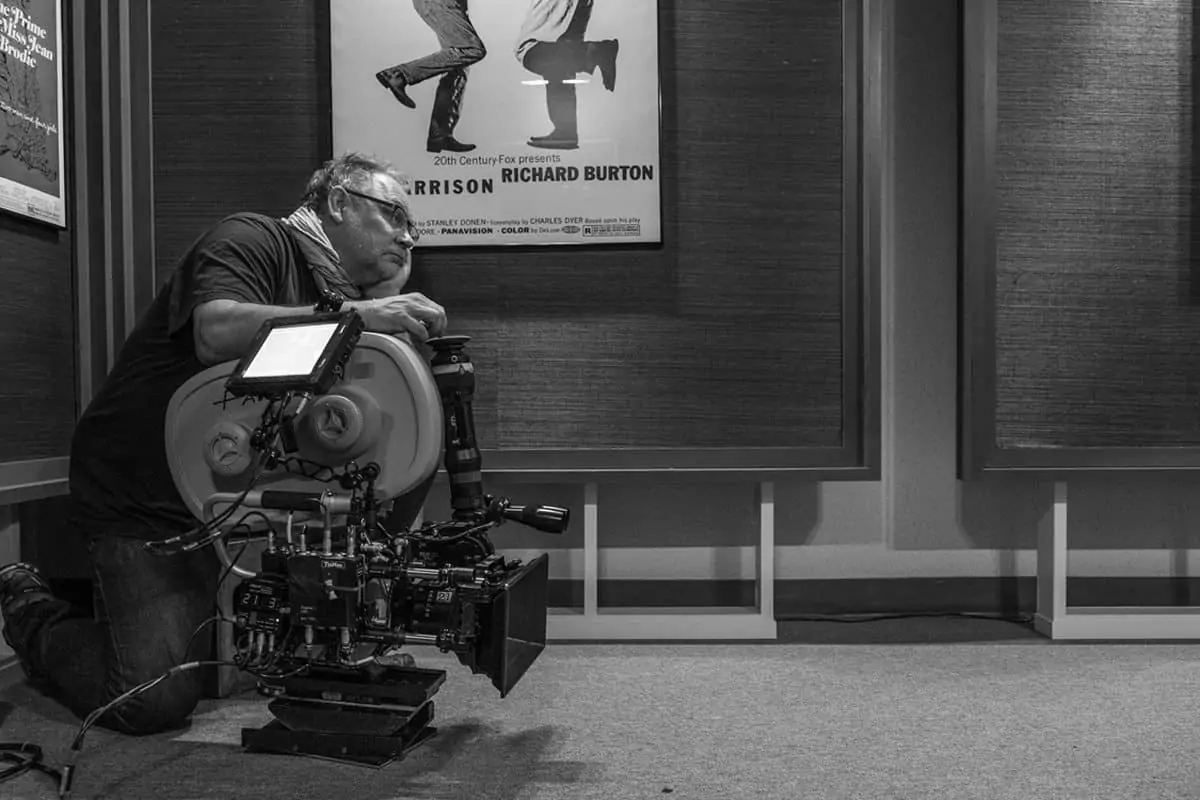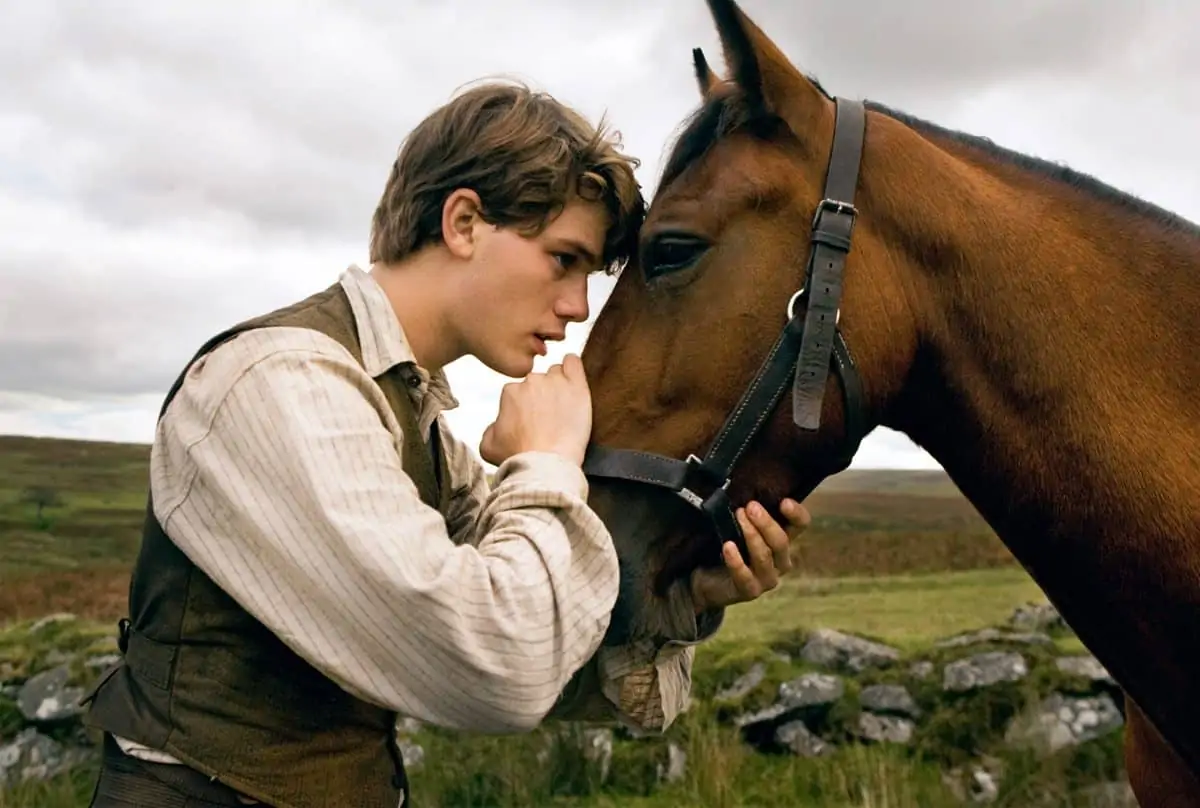THE FABLE MAN
Spielberg’s most personal work yet shines a light on the director’s early years of moviemaking and is full of nods to his great filmography. By his side for every film since 1993’s Schindler’s List is Janusz Kamiński, who found making The Fabelmans a deeply affecting experience.
One has to wonder how different a filmmaker Steven Spielberg would be if he was not a child of divorce as the traumatic experience has been a strong thematic influence, whether it be the father abandoning his family for alien beings in Close Encounters of the Third Kind or an adolescent living in a single-parent household in E.T. the Extra-Terrestrial, and now with the release of The Fabelmans, the personal life drives the narrative and is coloured by the bittersweet nostalgia of an adult reflecting upon bygone days. By Spielberg’s side ever since lensing Schindler’s List is Polish-born American cinematographer Janusz Kamiński who found the fictional retelling that stars Michelle Williams, Paul Dano, Seth Rogen, Gabriel LaBelle, and Judd Hirsch to be an emotional endeavour for the both of them.

“On many occasions we were weeping,” reveals Kamiński. “Steven wept because of his personal connections to what he was creating on the screen. For me, it was the realisation of how damaging my behaviour was to my children when divorcing my spouse. I have met Arnold Spielberg and spent several interesting evenings with him and Bernice, who at that point was his wife. Leah Adler [mother of Spielberg] was around and so was Bernie Adler. These are actual individuals whom I knew. After their spouses had died, Arnold and Leah became like a family unit with a big history behind them.”
It becomes an Easter egg hunt watching The Fabelmans. For example, connecting the maniacal pet monkey with the one that appears in the Indiana Jones franchise or Scouts on bikes harkening to a similar situation in E.T. The Extra-Terrestrial or the World War II amateur movie that foreshadowed Saving Private Ryan.
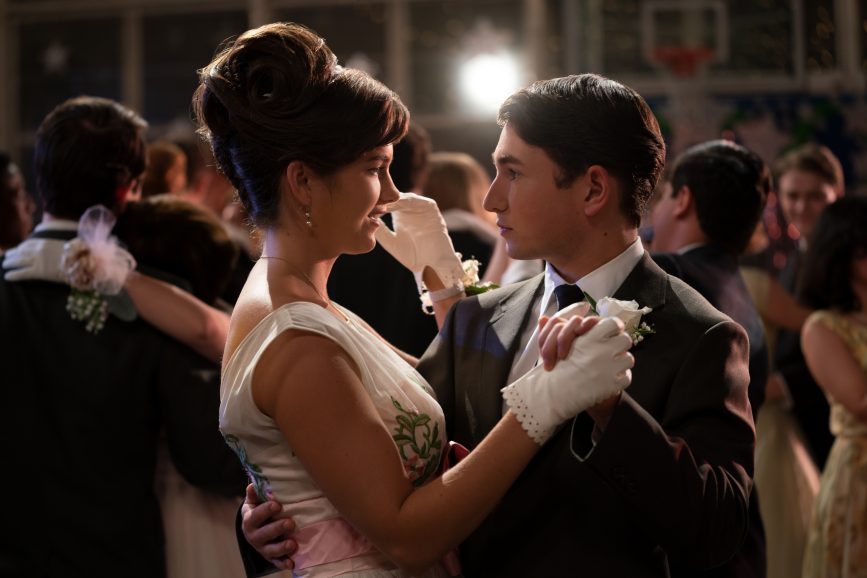
“You realise the inspiration for his movies, and the concrete grounding of his stories and how it relates to his life,” remarks Kamiński. “It’s always about that naïve desire to have a happy ending such as the father wanting to reunite with his child. The underdog prevails. The unknown will be explained, and we should embrace it. The feeling he felt through that section of his life is reflected in his movies.”
There were some revelations for Kamiński. “Things that were unknown to me such as Uncle Boris who comes into his life for seven minutes of screentime.” Like Oscar-winner Beatrice Straight in Network, Judd Hirsch is able to achieve a commanding and memorable performance despite the brief appearance. “Very impactful. What an amazing guy. He had so much energy on the screen and the theme that he projects which is art will tear you apart and at one point you will have to choose the direction you want to go with your life is very much about my life. Steven is cleverer than I am and was able to arrange his life in such a way that he gets both of the worlds.”
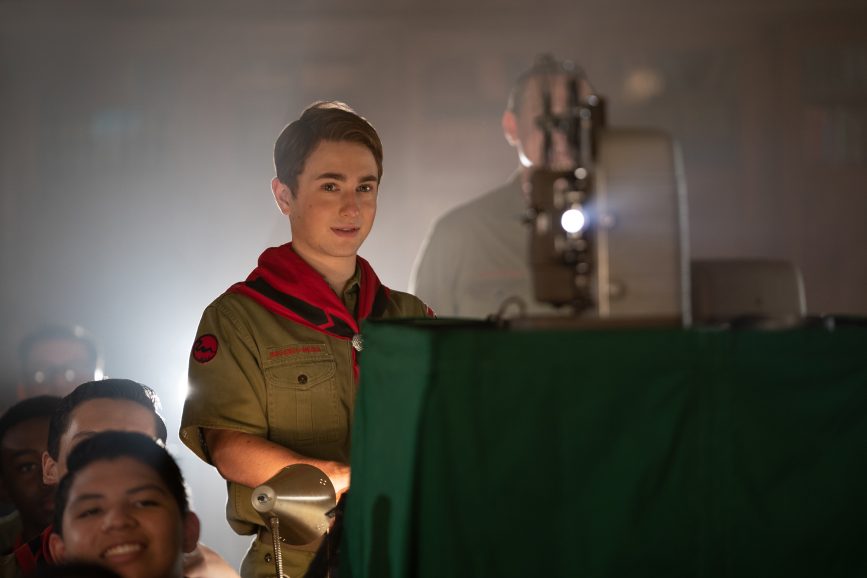
LEARNING BY DOING
Spielberg is a strong believer that aspiring filmmakers learn by doing which is exemplified by him as a teenager making and screening short films to family and friends. “His movies were made by a child who definitely had some talent and an interest in movies, but we wanted to make them better so that the brilliance of him as a filmmaker was clear when you see them,” notes Kamiński. “All of it we shot on 16mm and then through a practice I derogated the image to look like Super 8. There were a few scenes that we shot on Super 8 like when Sammy Fabelman [Gabriel LaBelle] has to handle the film in his hands and examine the footage. We never focused on what that was but if you wanted to zoom in, it’s actual footage. We hid a digital projector underneath the 8mm projector. Every time you point the camera over towards the 8mm projector you can see the real thing, but the image was always digital. We used the projector’s light to flare the lens.”

Shooting Sammy at the editing table was difficult to execute. “We spoke about that for many weeks,” states Kamiński. “It was impossible to do this with 35mm film because the table was so tall, and the film stock emulsion was going to be 500 ASA. We did not shoot digital. This was a film emulsion which is 500 ASA. The editing table was retrofitted with a small digital monitor and the footage feed into a computer so when Gabriel is manipulating the film back and forth, a person was on a computer mimicking what he was doing. There was no other way to do it. The quality of the brightness of the screen was prohibiting us from getting the image.” The three 35mm film stocks utilised were Kodak 500D, 50D and 500T. “I used the 35mm Panavision cameras and shot most of it on 500 ASA emulsion which was much more filmlike than the new emulsion that are a little bit too perfect. 16mm emulsion was beautiful. I would love to do a movie with the 16mm negative.”
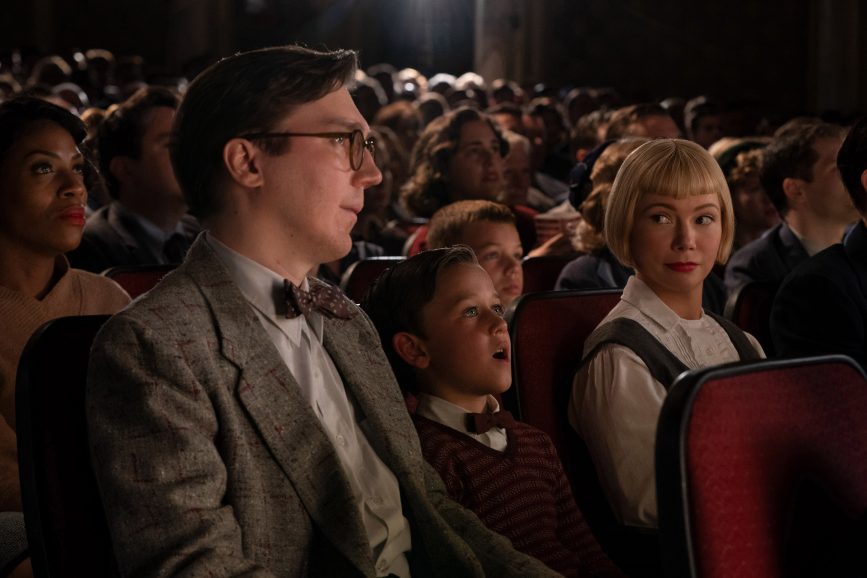
Wide-angle lenses were favoured because of the camera being in close proximity to the characters. “I had two different sets,” says Kamiński. “I had a set of lenses that were pristine and then I had a set of lenses that were not so perfect. What I mean by not perfect is that they would fall apart on the edges and so forth. You have to go into a special story to have lenses altered to such a degree that you are actually seeing the influence of the glass on the storytelling. I’m much more focused on lighting and camera angles rather than using specific lenses for this particular movie. It doesn’t mean that I haven’t done it. I’ve done it in Bridge of Spies when we shot widescreen and had Hawk lenses and those lenses were purposely falling apart on the edges and on the top and bottom. On West Side Story we had lenses that were tweaked in such a way to give you more flares. But this was a story that did not need any specific big artifact statements.”
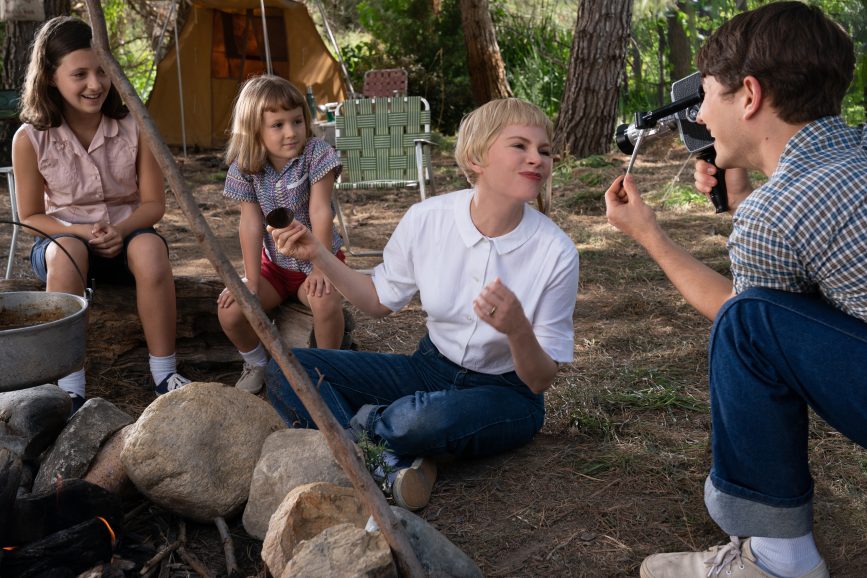
LIGHTING FOR FILM
Most of the scenes were lit with LEDs but close-ups made use of incandescent light. “When you’re using 35mm, video assist does not fully represent the proper colour and some of the lights had a tiny bit of a greenish hue,” notes Kamiński. “I had to correct that in post which is a relatively easy practice.”
For the childhood scenes in New Jersey, there was an inherent nostalgia attached to the 1950s. “It takes place in New Jersey in the winter, and it’s Christmas and Hanukkah. We had to follow certain conventions. I wanted to glamourise, make it beautiful and homey and almost bigger than life. We created this idealised style that gradually unveils itself and becomes a tragic realisation on the boy’s part that his parents and family are not as idyllic as he was hoping. New Jersey was rather easy. For Arizona, we shot in and outside of Los Angeles which has a similar climate. The only change that I did [to the film’s stylised, beautifying lighting style] was for when his father is living by himself, Sammy comes back home and they have a conversation; that was more naturalistic, reflective of the different time period.”
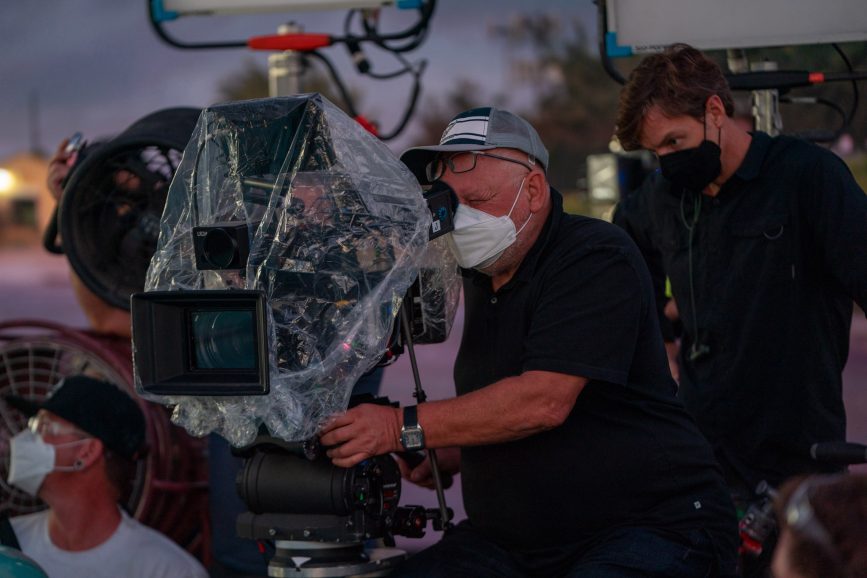
A shot list was put together for when Mitzi (Michelle Williams) chases after a hurricane in a car accompanied by her children. “I had to do the plates before the principal photography so we did a rough shot list so we could shoot the scene without Spielberg’s participation,” remarks Kamiński. “That was the only time because we had to do 25 shots into evening so needed to know precisely what was going to happen.”
The most complex scene ironically took place in a movie theatre. “Those shots had to be bright enough so you can see people but dark enough that it’s still a movie theatre. Dealing with 35mm camera you don’t have the direct representation of what the image looks like in terms of the brightness, so you need to know your exposures.”
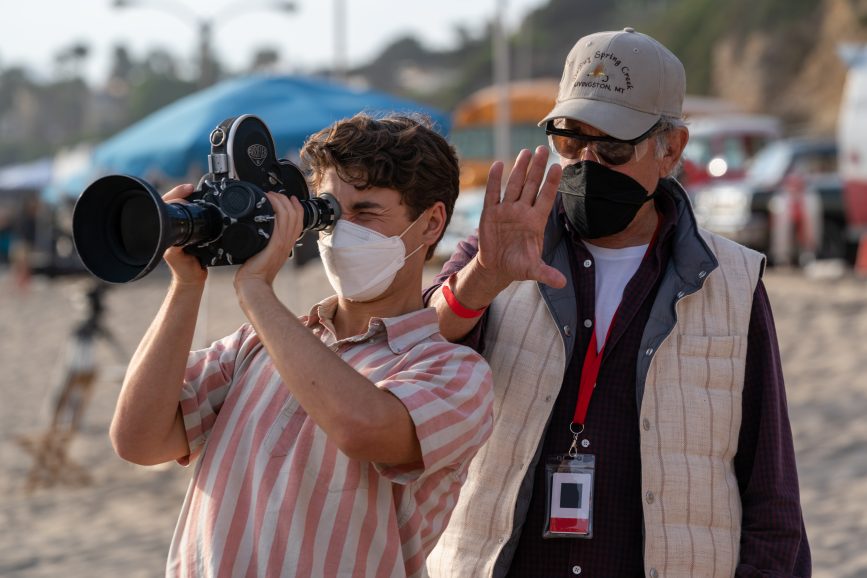
The final shot of The Fabelmans is turned into a movie poster. “I didn’t like where the light was when we shot it but that’s secondary because that ended up being a great shot,” says Kamiński. “And that little extra move Steven added, where the camera corrects itself for a better horizon line, was funny and rewarding especially after the scene between Sammy and John Ford.”
Kamiński comments on an iconic moment in the production that was unplanned: “Iconic incidents are based on experience, intuition, and knowledge. I’m sure that as a child, Steven projected the movies onto the palm of his hands, so he probably used that experience from the past and had the kid do the same thing. It became this beautiful iconic moment. I create this image and with my hands I can do so much with it. That’s a nice metaphor for the entire movie.”
